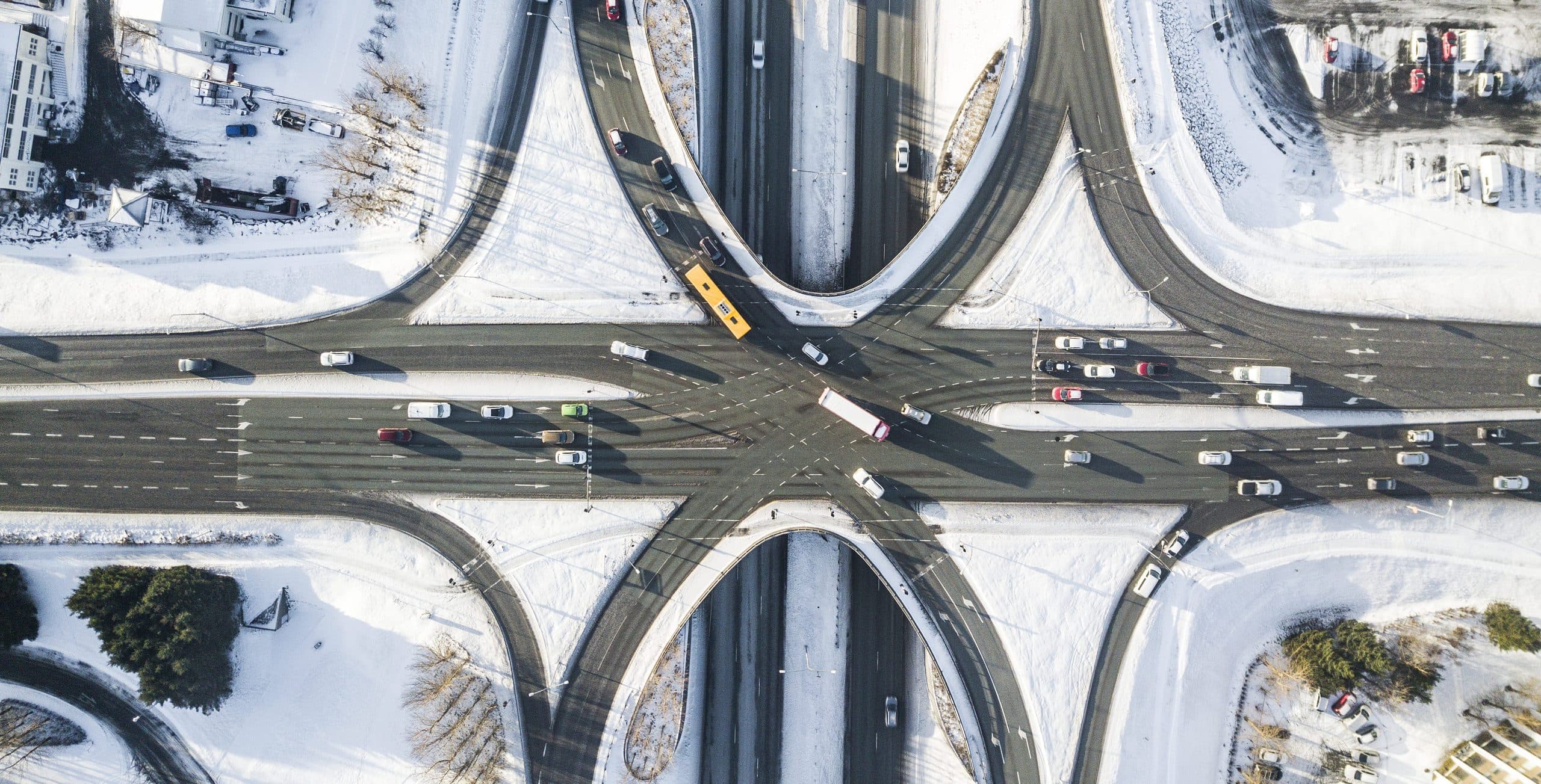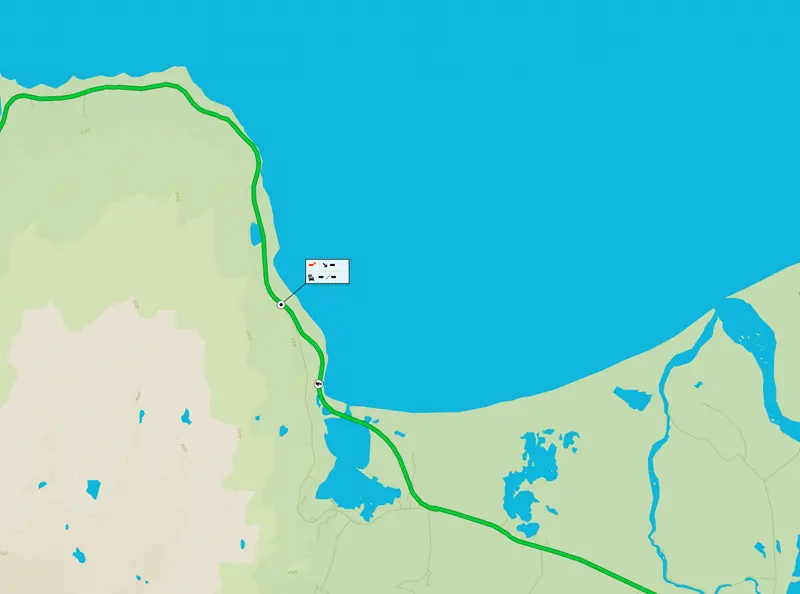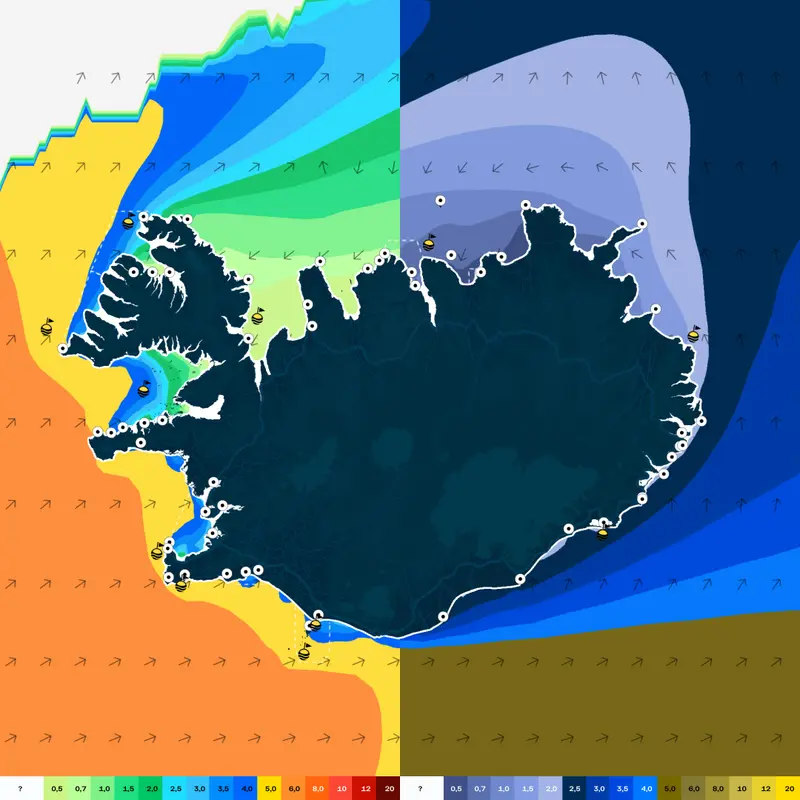Winter services
Roughly 5,000 of the 12,000km classified as Icelandic highway is serviced by the IRCA during wintertime. The IRCA oversees and pays for all snow- and ice removal services on the routes which the organisation manages. Usually, work is carried out by independent contractors.

The IRCA oversees and pays for all snow and ice removal on roads following winter service procedure. In most cases, contractors are hired to carry out winter service. During regular service days, snow and ice removal in each and every region should be completed before the start of regular morning traffic. Work procedures that are, among other factors, based on traffic volume and an assessment of conditions, determine how each road is serviced. Ice removal, as an example, is not determined necessary on all roads in the road system.
The IRCA’s winter service is mostly divided into snow- and ice removal, as well as monitoring. Whilst snow removal is a tangible task, easily recognisable, icing and ice prevention, on the other hand, are more complex undertakings. Road ice conditions can be unpredictable, and ice tends to form on very short notice.
Preventing icy conditions
In order to spurn against ice formation on Icelandic roads, both preventative measures, and actions after the formation of ice has occurred, need to be taken. Methods employed to decrease ice formation include snow plowing, the breakup of ice patches, and treating the road with either sand or salt.
When the decision to employ preventative measures has been taken, various factors need to be considered. For instance, long and short-term weather forecasts, road, and weather conditions, as well as traffic flow, all need to be taken into account. The IRCA employs the use of various technologies in service of preventative measures. Weather forecasts, cameras and resistance measurements are all utilized, and inspectors are sent out to assess conditions when needed. The IRCA’s watch stations, alongside dedicated operating units in each region, supervise the organisation of winter services, and are available 24/7, year round.
What causes icy roads?
Some of the more common weather conditions that contribute to icy roads are snowfall, freezing rain, freezing fog, or rainfall on an already icy road, even when air temperature is above freezing. Other conditions resulting in icy roads are e.g. water freezing on the road’s surface, or the presence of low-lying fog clouds in subzero temperatures. Furthermore, hoarfrost can form in clear skies, which transforms into ice crystals on the road. Snow melting by sunlight can also contribute to icy conditions. All of these issues can arise in a moment’s time and are unforeseeable. Some areas of the road system are more likely than others to form ice. For example, bridges, lowlands, and stretches of road where tree cover casts a shadow, resulting in colder, ice-prone roads.
Half of the funds which the IRCA allocates for winter services is dedicated to ice prevention. Despite this, it is evident that icy roads cannot be fully prevented. No amount of financial resources would make it possible to keep the roughly 5000km of winter-serviced roads clear of ice, owing to Iceland’s unpredictable, malleable weather.
Winter service divisions
Winter service on roads is split into several prioritised divisions. On umferdin.is publicly available data show how winter service is carried out on each individual road. If a specific road is selected relevant information, such as how winter service is carried out on said road, is provided,
Avalanche warnings through SMS
Súðavíkurhlíð, Flateyrarvegur, Siglufjarðarvegur, Fagridalur, Raknadalshlíð, and Ólafsfjarðarmúli.
The IRCA maintains an SMS alerts system for travellers on the danger of avalanches or collapse on select roads. The roads for which information is provided are highways 61 at Súðavíkurhlíð, 64 on Flateyrarvegur, 76 on Siglufjarðarvegur by Almenningar, 82 on Ólafsfjarðarmúli, 01 through Fagridalur, and 62 through Raknadalshlíð.
The alerts are, among other things, based on an avalanche forecast which the Icelandic Meteorological Office provides for the IRCA concerning these stretches of road. The following stages are in place:
Due to avalanche danger:
A. an avalanche might occur in the next few hours
B. a state of uncertainty is declared, meaning that an avalanche could be imminent, and travellers are encouraged to not be on the road without reason.
C. a state of danger declared — the road is closed.
D. state of danger averted — the road is re-opened.
Due to soil subsidence / road settlement through Almenningar on Siglufjarðarvegur:
B. danger level 1, road remains open.
C. danger level 2, road is closed.
D. danger level averted, road is re-opened.
Anyone can register to receive SMS alerts on these roads by e-mailing umferd@vegagerdin.is or by phoning the traffic service (1777).








